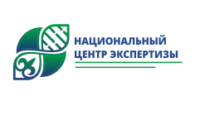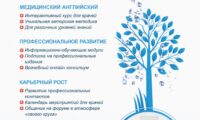Получена: 30/03/2023/ Принята: 22/09/2023 / Опубликована online: 30/10/2023
УДК 616.718-43-001.5-89
DOI 10.53511/PHARMKAZ.2023.31.21.020
Р.А. АСКЕРОВ1, Е.Н. НАБИЕВ2, А.Т. ДЖУМАБЕКОВ1, Б.С. ДОСМАЛОВ3, А.М. МОНГОЛ4, Ж.К. АРГЫНБАЕВ1
1«ВШОЗ» Казахстанский медицинский университет, Алматы, Казахстан
2Казахский Национальный медицинский университет имени С.Д. Асфендиярова, Алматы, Казахстан
3ГКП на ПХВ «Городская клиническая больница №4», г. Алматы, Казахстан
4Областная больница города Талдыкорган, Талдыкорган Казахстан
СОВРЕМЕННЫЕ ИМПЛАНТАТЫ ДЛЯ ИНТРАМЕДУЛЛЯРНОГО
ОСТЕОСИНТЕЗА ВЕРТЕЛЬНЫХ ПЕРЕЛОМОВ БЕДРЕННОЙ КОСТИ
(ОБЗОР ЛИТЕРАТУРЫ)
Введение: Проблема лечения больных с вертельными переломами бедренной кости является актуальной, что обусловлено высокой частотой переломов среди пожилых из-за увеличения продолжительности жизни наряду с остеопорозом и трудностью выбора имплантатов для остеосинтеза.
Имплантаты для интрамедуллярного остеосинтеза являются методом выбора при фиксации таких переломов. Современная система интрамедуллярной фиксации переломов признана высокоэффективным методом, особенно при нестабильных вертельных и подвертельных переломах бедренной кости, обеспечивает высокую антиротационную стабильность конструкций, преодолевает “Z”
эффект, медиальную миграцию шеечного винта и малоинвазивность вмешательства. Дальнейшее
исследования позволяет отметить перспективные направления оперативного метода лечения больных с вертельными переломами бедренной кости.
Цель данной работы является изучение преимущества имплантатов для интрамедуллярного остеосинтеза вертельных переломов бедренной кости с использованием базы Scopus, PubMed, Google
Scholar, Lilacs и Cuiden.
Материалы и методы. В статье приведен анализ литературных источников, индексируемых в базах Scopus, PubMed, Google Scholar, Lilacs и Cuiden, посвященных исследованию метода интрамедуллярного остеосинтеза вертельных переломов бедренной кости.
Результаты. Мы пытались структурировать в обзоре литературы импланты для интрамедуллярного остеосинтеза вертельных переломов бедренной кости, основываясь на их преимущаства и антиротационные свойства.
Выводы. Современные интрамедуллярные имплантаты обеспечивают стабильную фиксацию фрагментов даже при остеопорозе, минимальную кровопотерю во время операции, сокращения времени
операции, раннюю послеоперационную нагрузку и является безопасными, эффективными. Оптимизация имплантантов для интрамедуллярного остеосинтеза вертельных переломов является перспективным направлением в травматологии и ортопедии.
Ключевые слова: вертельный перелом, бедренная кость, остеосинтез, интрамедуллярный остеосинтез, металло-конструкций, остеопороз.
СПИСОК ЛИТЕРАТУРЫ
1 Downey C., Kelly M., Quinlan JF. Changing trends in the mortality rate at 1-year post hip fracture: a systematic review. World J Orthop. 2019; 10:66–175.
2 Mattisson L., Bojan A., Enocson A. Epidemiology, treatment and mortality of trochanteric and subtrochanteric hip fractures: data from the Swedish fracture
register. BMC Musculoskelet Disord. 2018; 19:369.
3 Mavrogenis A.F., Panagopoulos G.N., Megaloikonomos P.D., et al. Complications after hip nailing for fractures. Orthopedics. 2016; 39:108–116.
4 Meinberg E.G., Agel J., Roberts C.S., Karam M.D., Kellam J.F. Fracture and dislocation classification compendium. J Orthop Trauma. 2018; 32:170.
5 Faraz Jamil, Julfiqar Mohd, Mazhar Abbas, Yasir Salam Siddiqui, Mohammad Jesan Khan. A comparative study of Proximal Femoral Nail (PFN) versus
Dynamic Condylar Screw (DCS) in management of unstable trochanteric fractures. Int J Burns Trauma. 2022; 12(3):83–92.
6 Jackson C., Tanios M., Ebraheim N. Management of subtrochanteric proximal femur fractures: a review of recent literature. Adv Orthop. 2018; 18:18–25.
7 Court-Brown C.M., Heckman J.D., McQueen M., Ricci W., Thornetta P. Rockwood and Green’s fractures in adults. Wolters Kluwer. 2015:2075–2083.
8 Russell TA. Intertrochanteric fractures of the hip. In: Court-Brown CM, ed. Rockwood and Green’s fractures in adults. Eighth ed. Philadelphia: Wolters Kluwer
Health, 2015:2076–2129.
9 Kawaji H., Uematsu T., Oba R., Takai S. Conservative treatment for fracture of the proximal femur with complications. J Nippon Med Sch. 2016; 83:2–5.
10 Современные хирургические методы лечения пострадавших с переломами проксимального отдела бедренной кости / И.Ф. Ахтямов, А.Н.
Коваленко, Е.С. Шигаев, М.Ю. Моисеев, Э.Б. Гатина // Казанский медицинский журнал.2012;2:245-249.
11 Самодай В.Г. Организационные и клинические вопросы оказания помощи больным в травматологии и ортопедии: сборник тезисов 12
межрегиональной научно-практической конференции / под ред. В.Г. Самодая, Воронеж: Научная книга, 2017:250 с.
12 Хирургическое лечение псевдоартрозов длинных трубчатых костей с использованием дополнительных очагов костеобразования / Ю.А. Барабаш
[и др.] // Сибирский медицинский журнал. 2009; 7:73-76.
13 Slefan Cristia. Современные проблемы лечения вертельных переломов и переломов шейки бедренной кости // Гений ортопедии. 2014; 2:16-21.
14 Zhang L. Treatment of unstable intertrochanteric femoral fractures with locking gamma nail (LGN): A retrospective cohort study. Int. J. Surg. 2016; 26:12–17.
15 Yx C., Xia S. Optimal surgical methods to treat intertrochanteric fracture: A Bayesian network meta-analysis based on 36 randomized controlled trials. J.
Orthop. Surg. Res. 2020; 15:402.
16 Cipollaro L., Aicale R., Maccauro G., Maffulli N. Single- versus double-integrated screws in intramedullary nailing systems for surgical management of
extracapsular hip fractures in the elderly: A systematic review. J. Biol. Regul. Homeost. Agents. 2019; 33:175–182.
17 Pesce V., Maccagnano G., Vicenti, G., Notarnicola A., Moretti L., Tafuri S., Vanni D., Salini V., Moretti B. The effect of hydroxyapatite coated screw in the
lateral fragility fractures of the femur. A prospective randomized clinical study. J. Biol. Regul. Homeost. Agents. 2014; 28:125–132.
18 Cheng Y., Sheng X. Optimal surgical methods to treat intertrochanteric fracture: a Bayesian network meta-analysis based on 36 randomized controlled
trials. J Orthop Surg Res. 2020; 15:402.
19 Lu Y., Uppal H.S. Hip Fractures: Relevant Anatomy, Classification, and Biomechanics of Fracture and Fixation. Geriatr. Orthop. Surg. Rehabil. 2019; 10:215.
20 Evolving concepts of stability and intramedullary fixation of intertrochanteric fractures — a review / C. Kokoroghiannis, I. Aktselis, A. Deligeorgis, E.
Fragkomichalos, I. Papadimas // Injury. 2012; 43:686–693.
21 Результаты лечения переломов проксимального отдела бедренной кости в условиях ГКБ №7 / С.А. Амраев, У.М. Абуджазар, У.А. Абдуразаков,
А.Р. Байзаков, Р.С. Турекулов // Вестник КазНМУ. 2018; 1:197–198.
22 Mattisson L., Bojan A., Enocson A. Epidemiology, treatment and mortality of trochanteric and subtrochanteric hip fractures: data from the Swedish fracture
register. BMC Musculoskelet Disord. 2018; 19:369.
23 Vacanti J.P. Editorial: tissue engineering: a 20-year personal perspective / J.P. Vacanti // Tissue Eng. 2007;13 (2):231–232.
24 Lu Y., Uppal H.S. Hip fractures: relevant anatomy, classification, and biomechanics of fracture and fixation. Geriatr Orthop Surg Rehabil. 2019; 10:310.
25 Cheng Y., Sheng X. Optimal surgical methods to treat intertrochanteric fracture: a Bayesian network meta-analysis based on 36 randomized controlled
trials. J. Orthop Surg Res. – 2020; 15:402.
26 Effect of distal interlock fixation in stable intertrochanteric fractures / P.M. Kane, V. Bryan, P. David, K. Sarath, C.T. Born // Orthopedics. 2013; 36(7):859-864.
27 Рациональный остеосинтез при оперативном лечении переломов / А.Ф. Лазарев, Э.И. Солод, С.С. Стоюхин [и др.] // Проблемы диагностики
и лечения повреждений и заболеваний тазобедренного сустава. Тез. Всерос. науч.-практич. конф. с междунар. участием / Под ред. проф. И.Ф.
Ахтямова. Казань. 2013; 74-86.
28 Parker M.J., Handoll H.H. Gamma and other cephalocondylic intramedullary nails versus extramedullary implants for extracapsular hip fractures in adults.
Cochrane Database Syst Rev – 2010; 9:93.
29 Kregor J., Obremskey W.T., Kreder H.J., Swiontkowski M.F. Unstable pertrochanteric femoral fractures. J Orthop Trauma. 2014; 28:25–28.
30 Jackson С., Tanios M., Ebraheim N. Management of subtrochanteric proximal femur fractures: a review of recent literature. Adv Orthop. 2018:132-701.
31 Zhu Q., Xu X., Yang X., et al. Intramedullary nails versus sliding hip screws for AO/OTA 31-A2 trochanteric fractures in adults: a meta-analysis. Int J Surg.
2017; 43:67–74.
32 Caiaffa V., Vicenti G., Mori C., et al. Is distal locking with short intramedullary nails necessary in stable pertrochanteric fractures? A prospective, multicentre,
randomised study. Injury. 2016; 47:98–S106.
33 Yu X., Wang H., Duan X., Liu M., Xiang Z. Intramedullary versus extramedullary internal fixation for unstable intertrochanteric fracture, a meta-analysis.
Acta Orthop Traumatol Turc. 2018; 52:299–307.
34 National Institute for Health and Care Excellence. Hip fracture: management, 2017. https://www.nice.org.uk/guidance/cg124/chapter/Recommendations
(date last accessed 24 June 2019).
35 Ramos P.L., Seral B., Beano A., et al. Fractures of the proximal femur: the Gamma nail versus plate. Osteosynth Trauma Care. 2005; 13:18–25.
36 Anglen J.O., Weinstein J.N.; American Board of Orthopaedic Surgery Research Committee. Nail or plate fixation of intertrochanteric hip fractures: changing
pattern of practice. A review of the American Board of Orthopaedic Surgery Database. J. Bone Joint Surg Am. 2008; 90:700–707.
37 Niu E., Yang A., Harris A.H., Bishop J. Which fixation device is preferred for surgical treatment of intertrochanteric hip fractures in the United States? A survey
of orthopaedic surgeons. Clin Orthop Relat Res. 2015;47(3):3647–3655.
38 Maniar H.H., Tawari A.A., Mookerjee G., Horwitz D.S., Mookerjee, Gaurav B.A., Horwitz DS. Short or long, locked or unlocked nails for intertrochanteric
fractures. Tech Orthop. 2015; 30:87–96.
39 Joglekar S.B., Lindvall E.M., Martirosian A. Contemporary management of subtrochanteric fractures. Orthop Clin North Am. 2015; 46:21–35.
40 Konstantinidis L., Helwig P., Hirschmüller A., Langenmair E., Südkamp N.P., Augat P. When is the stability of a fracture fixation limited by osteoporotic bone?
Injury. 2016; 47:27–32.
41 Adam P. Treatment of recent trochanteric fracture in adults. Orthop Traumatol Surg Res. 2014; 100:75–83.
42 Roberts K.C., Brox W.T., Jevsevar D.S., Sevarino K. Management of hip fractures in the elderly. J Am Acad Orthop Surg. 2015; 23:131–137.
43 Queally J.M., Harris E., Handoll H.H., Parker M.J. Intramedullary nails for extracapsular hip fractures in adults. [Review]. Cochrane Database Syst Rev.
2014; 9:61.
44 Nyholm A.M., Palm H., Malchau H., Troelsen A., Gromov K. Lacking evidence for performance of implants used for proximal femoral fractures: a systematic
review. Injury. 2016; 47:586–594.
45 Bhandari M., Schemitsch E., Jonsson A., Zlowodzki M., Haidukewych G.J. Gamma nails revisited: gamma nails versus compression hip screws in the
management of intertrochanteric fractures of the hip: a meta-analysis. J Orthop Trauma. 2009; 23(6):460–4.
46 Haidukewych G.J. Intertrochanteric fractures: ten tips to improve results. J Bone Joint Surg Am. 2009; 91(3):712–9.
47 Hou Z., Bowen T.R., Irgit K.S., Matzko M.E., Andreychik C.M., Horwitz D.S., et al. Treatment of pertrochanteric fractures (OTA 31-A1 and A2): long versus
short cephalomedullary nailing. J Orthop Trauma. 2013; 27(6):318–24.
48 Boone C., Carlberg K.N., Koueiter D.M., Baker K.C., Sadowski J., Wiater P.J., et al. Short versus long intramedullary nails for treatment of intertrochanteric
femur fractures (OTA 31-A1 and A2). J Orthop Trauma. 2014; 28(5):96–100.
49 Kleweno C., Morgan J., Redshaw J., Harris M., Rodriguez E., Zurakowski D., et al. Short versus long cephalomedullary nails for the treatment of
intertrochanteric hip fractures in patients older than 65 years. J Orthop Trauma. 2014; 28(7):391–7.
50 Kanakaris N.K., Tosounidis T.H., Giannoudis P.V. Nailing intertrochanteric hip fractures: short versus long; locked versus nonlocked. J Orthop Trauma.
2015; 4:10–6.
51 Vaughn J., Cohen E., Vopat B.G., Kane P., Abbood E., Born C. Complications of short versus long cephalomedullary nail for intertrochanteric femur fractures,
minimum 1 year follow-up. Eur J Orthop Surg Traumatol. 2015; 25(4):665–70.
52 Liu J., Frisch N.B., Mehran N., Qatu M., Guthrie ST. Short-term Medical Complications Following Short Versus Long Cephalomedullary Nails. Orthopedics.
2018; 41(5):636–42.
53 Sadeghi C., Prentice H.A., Okike K.M., Paxton E.W. “Treatment of Intertrochanteric Femur Fractures with Long versus Short Cephalomedullary Nails.” The
Permanente journal vol. 2020; 19:229.
54 Chua I.T.H, Rajamoney G.N., Kwek E.B.K. Cephalomedullary nail versus sliding hip screw for unstable intertrochanteric fractures in elderly patients. J
Orthop Surg (Hong Kong). 2013; 21(3):308–12.
55 Савинцев А.М., Малько А.В. Малоинвазивный остеосинтез переломов проксимального отдела бедренной кости конструкцией PFN в условиях
остеопороза / А.М. Савинцев, А.В. Малько // Здоровье – основа человеческого потенциала: проблема и пути их решения. 2010; 2:611–612.
56 Evolving concepts of stability and intramedullary fixation of intertrochanteric fractures — a review / C. Kokoroghiannis, I. Aktselis, A. Deligeorgis, E.
Fragkomichalos, I. Papadimas // Injury. 2012; 43:686–693.
57 Лечение переломов вертельной области на современном этапе (обзор литературы) / А.Б. Слободской, В.А. Кирсанов, А.Ю. Попова, Г.Г. Бордуков
// Современная медицина. 2018; 2(10):63–67.
58 Die proximale Femurfraktur des alteren Patienten. Einfluss von operativer Versorgung und Patientencharakteristika auf die postoperative Letalität / F. Geiger,
K. Schreiner, S. Schneider [et al.] // Orthopade. 2006; 35(6):651–657.
59 Treatment of intertrochanteric femur fractures in elderly patients: internal fixation or hemiarthroplasty / H.Kesmezacar, T.Oğüt, M.G. Bilgili, S.Gökay,
Y.Tenekecioğlu // Acta Orthop Traumatol Turc. 2005; 39:287–294.
60 Kim S.Y., Kim Y.G., Hwang J.K. Cementless calcar-replacement hemiarthroplasty compared with intramedullary fixation of unstable intertrochanteric
fractures. A prospective, randomized study / S.Y. Kim, Y.G. Kim, J.K.Hwang // J. Bone Joint Surg Am. 2005; 87:2186–2192.
61 Yoo J., Kim S., Choi J., Hwang J. Gamma 3 U-Blade lag screws in patients with trochanteric femur fractures: are rotation control lag screws better than
others? J Orthop Surg. 2019; 14(1):440.
62 Lang N.W., Arthold C., Joestl J., Gormasz A., Boesmueller S., Hajdu S., Sarahrudi K. Does an additional antirotation U-Blade (RC) lag screw improve
treatment of AO/OTA 31 A1-3 fractures with gamma 3 nail? Injury. 2016; 47(12):2733–8.
63 Yoo J., Kim S., Jung H., Hwang J. Clinical outcomes of Ublade Gamma3 nails used to treat patients with trochanteric fractures: retrospective multicenter
study. Hip Pelvis. 2019; 31:95–101.
64 Lang N.W., Arthold C., Joestl J., et al. Does an additional antirotation U-Blade (RC) lag screw improve treatment of AO/OTA 31 A1-3 fractures with gamma
3 nail? Injury. 2016; 47:2733–8.
65 Dhamangaonkar A.C. Management Options and Treatment Algorithm in Intertrochanteric Fractures. Int Trauma. 2015;1(1):12–16.
66 Lenich A., Vester H., Nerlich M., Mayr E., Stöckle U., Füchtmeier B. Clinical comparison of the second and third generation of intramedullary devices for
trochanteric fractures of the hip-Blade vs screw. Injury. 2010; 41:1292–6.
67 Kristek D., Lovrić I., Kristek J. et al. Radiographic and functional results of osteosynthesis using the proximal femoral nail antirotation (PFNA) in the treatment
of unstable intertrochanteric femoral fractures // Collegium Antropologicum. 2010; (3): 937–940.
68 Huang Y., Zhang C., Luo Y. A comparative biomechanical study of proximal femoral nail (InterTAN) and proximal femoral nail antirotation for intertrochanteric
fractures. Int Orthop. 2013; 37:2465–73.
69 Nüchtern J.V., Ruecker A.H., Sellenschloch K., et al. Malpositioning of the lag screws by 1- or 2-screw nailing systems for pertrochanteric femoral fractures:
mechanical comparison of gamma 3 and intertan. J Orthop Trauma. 2014; 28:276–82.
70 Ye P.H., Huang L., Zha N. F. et al. Proximal femoral nail for the treatment of unstable intertrochanteric femoral fractures // Zhongguo Gu Shang. 2011; 24(8):7.
71 Малько А.В., Савинцев А.М. «Сutout» эффект как причина осложнений малоинвазивного остеосинтеза переломов проксимального отдела
бедренной кости конструкцией PFNA // Вестник СПбГУ. Сер. 11. 2014; 1:114-120.
72 Kammerlander C., Gebhard F., Meier C. et al. Standardised cement augmentation of the PFNA using a perforated blade: A new technique and preliminary
clinical results. A prospective multicentre trial // Injury. 2011; 42(12):1486–90.
73 Erhart S., Kammerlander C., El-Attal R., Schmoelz W. Is augmentation a possible salvage procedure aft er lateral migration of the proximal femur nail
antirotation? // Arch. Orthop. Trauma Surg. 2012; 132(11):1577–81.
74 Blankstein M. et al. Assessment of intraosseous femoral head pressures during cement augmentation of the perforated proximal femur nail antirotation
blade //J. Orthop Trauma. 2014; 28(7):398–402.
75 Erhart S., Schmoelz W., Blauth M., Lenich A.. Biomechanical effect of bone cement augmentation on rotational stability and pull-out strength of the
Proximal Femur Nail Antirotation // ncbi.nlm.nih.gov URL: http://www.ncbi.nlm.nih.gov/pubmed.
76 Загородний Н.В., Волна А.А., Панфилов И.И. Преимущества использования проксимального бедренного антиротационного гвоздя (PFNA) с
аугментацией при остеосинтезе переломов бедра на фоне остеопороза // Клиническая практика. 2016; 2:75-78.
77 Nherera L., Trueman P., Horner A., Watson T., Johnstone A.J. Comparison of a twin interlocking derotation and compression screw cephalomedullary nail
(InterTAN) with a single screw derotation cephalomedullary nail (proximal femoral nail antirotation): a systematic review and meta-analysis for intertrochanteric
fractures. J Orthop Surg Res. 2018; 13:46.
78 Swart E., Makhni E.C., Macaulay W., et al. Cost-effectiveness analysis of fixation options for intertrochanteric hip fractures. J Bone Joint Surg Am. 2014;
96:1612–20.
79 Hopp S., et al. Does the implant make the difference? — prospective comparison of two different proximal femur nails. Acta Orthop Belg. 2016; 82:319–31.
80 Городниченко А.И., Усков О.Н., Платонов И.И. Интрамедуллярный остеосинтез переломов вертельной области бедренной кости у больных
старшей возрастной группы // Хирургия. 2013; 3:55–58.
81 Boris A. Zelle, Antonio J. Webb, Christopher Matson, Michael Morwood, Khang H. Dang, Samuel S. Ornell, Gabrielle Gostigian, Cody M. Ramirez1 and
Hassan Mir. Safety and efficacy of a two-screw cephalomedullary nail for intertrochanteric femur fracture fixation: a retrospective case series in 264 patients.
Patient Safety in Surgery. 2018; 2:31.
82 Mavrogenis AF, Panagopoulos GN, Megaloikonomos PD, et al. Complications after hip nailing for fractures. Orthopedics. 2016; 39:108–116.
83 Tubbax H., Hendzol P., Sergeant P. Cardiac perforation after Kirschner wire migration // Acta Chir. Belg. 1989; 89:309–311.
84 Lobo-Escolar A, Joven E, Iglesias D, et al. Predictive factors for cutting out in femoral intramedullary nailing. Injury. 2010; 41:1312–1316.
85 Socci AR, Casemyr NE, Leslie MP, Baumgaertner MR. Implant options for the treatment of intertrochanteric fractures of the hip: rationale, evidence, and
recommendations. Bone Joint J. 2017; 99:128–133.
86 Tauber M., Resch H. Sigmoid perforation after medial migration of lag screw in gamma nailing. Arch Orthop Trauma Surg. 2009;126(2):118–122.
87 Lasanianos N., Mouzopoulos G., Georgilas I. Hip screw lateral migration with no cut-out or non-union implication: a case report. Cases J. 2009; 2:641-9.
88 Tsai S.-W., Lin C.-F.J., Tzeng Y.-H. Risk factors for cut-out failure of Gamma3 nails in treating unstable intertrochanteric fractures: an analysis of 176 patients.
J Chin Med Assoc. 2017;80(9):587–594.
89 Bojan A.J., Beimel C., Taglang G., Collin D., Ekholm C., Jönsson A. Critical factors in cut-out complication after Gamma Nail treatment of proximal femoral
fractures. BMC Muscoskel Disord. 2013; 3:14–19.
90 Hesse B., Gächter A. Complications following the treatment of trochanteric fractures with the gamma nail. Arch Orthop Trauma Surg. 2009; 124(10):692–698.
91 Lee J.W., Cho H.M., Seo J.W. Intrapelvic penetration of lag screw in proximal femoral nailing: a case report. J Korean Fract Soc. 2017; 30:203–208.
92 Brunner A., Jöckel J.A., Babst R. The PFNA proximal femur nail in treatment of unstable proximal femur fractures–3 cases of postoperative perforation of
the helical blade into the hip joint. J Orthop Trauma. 2008; 22:731–736.
93 Nikoloski A.N., Osbrough AL, Yates PJ. Should the tip-apex distance (TAD) rule be modified for the proximal femoral nail antirotation (PFNA)? A retrospective
study. J Orthop Surg Res. 2013; 8:35.
94 Lucke M., Burghardt R.D., Siebenlist S, Ganslmeier A., Stöckle U. Medial migration of lag screw with intrapelvic dislocation in gamma nailing – a unique
problem? A report of 2 cases. J Orthop Trauma. 2010; 24(2):6–11.
95 Lozano-Alvarez C., Alier A., Pelfort X., Martínez-Díaz S., Puig L. Cervicocephalic medial screw migration after intertrochanteric fracture fixation, OTA/AO
31-A2, using intramedullary nail Gamma3: report of 2 cases and literature review. J Orthop Trauma. 2013;27(11): 264–267.
96 Die proximale Femurfraktur des alteren Patienten. Einfluss von operativer Versorgung und Patientencharakteristika auf die postoperative Letalität / F. Geiger,
K. Schreiner, S. Schneider [et al.] // Orthopade. 2006; 35(6):651–657.
97 Is distal locking necessary? A biomechanical investigation of intramedullary nailing constructs for intertrochanteric fractures / D. Gallagher, B. Adams, H. ElGendi, A. Patel, L. Grossman et al. // J. Orthop Trauma. 2013; 2(7):373–378.
98 Is distal locking necessary? A biomechanical investigation of intramedullary nailing constructs for intertrochanteric fractures / D. Gallagher, B. Adams, H. ElGendi, A. Patel, L. Grossman et al. // J. Orthop Trauma. 2013; 27(7):373–378.
99 George A.V., Bober K., Eller E.B., Hakeos W.M., Hoegler J., Jawad A.H., Guthrie S.T. OTA Int. 2022; 5(1):185.
100 A biomechanical comparison of locked and unlocked long cephalomedullary nails in a stable intertrochanteric fracture model / Kane P., Vopat B., Paller D.,
Koruprolu S., Daniels A.H., C. Born // J. Orthop Trauma. 2014;28(12):715–720.
101 Treatment of intertrochanteric femur fractures in elderly patients: internal fixation or hemiarthroplasty / H. Kesmezacar, T. Oğüt, M.G. Bilgili, S. Gökay, Y.
Tenekecioğlu // Acta Orthop Traumatol Turc. 2005; 39:287–294.
102 Kim S.Y., Kim Y.G., Hwang J.K. Cementless calcar-replacement hemiarthroplasty compared with intramedullary fixation of unstable intertrochanteric
fractures. A prospective, randomized study / S.Y. Kim, Y.G. Kim, J.K.Hwang // J. Bone Joint Surg Am. 2008; 87:2186–2192.


































